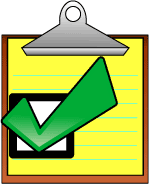Check out our White Paper Series!
A complete library of helpful advice and survival guides for every aspect of system monitoring and control.
1-800-693-0351
Have a specific question? Ask our team of expert engineers and get a specific answer!
Sign up for the next DPS Factory Training!

Whether you're new to our equipment or you've used it for years, DPS factory training is the best way to get more from your monitoring.
Reserve Your Seat Today
Battery monitoring is just the start of what you should be looking for in a remote network alarm monitoring system. Here's a handy checklist of all the essential features you should look for. Print this checklist out and use it to rate the systems you're evaluating. If a system can't meet these basic requirements, cross it off your list.

This is just a checklist of basic monitoring functions. If you want to find a battery monitoring system that meets and exceeds your requirements, select one of the options below ...